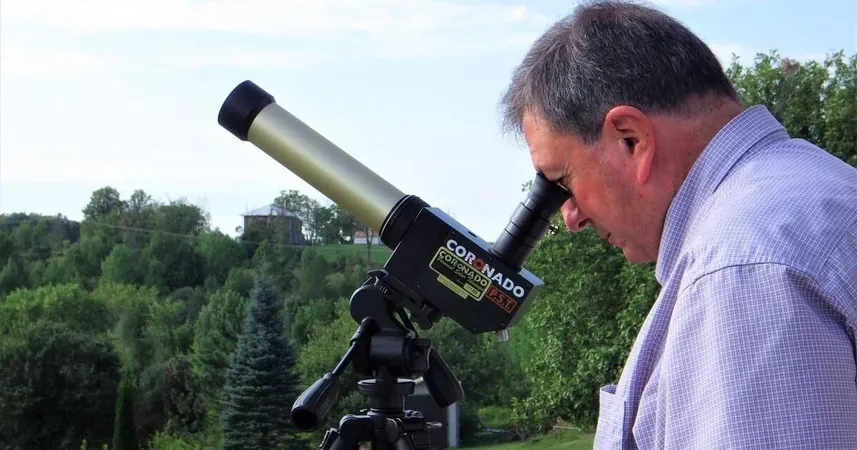
Alan Eugene Miller Becomes Alabama's Second Inmate Executed by Nitrogen Hypoxia: The Controversy Unfolds
2024-09-27
Execution of Alan Eugene Miller
In a landmark event for Alabama's death penalty procedures, 59-year-old Alan Eugene Miller was executed on Thursday evening, making him the second inmate to die by nitrogen hypoxia—a method drawing intense criticism for potentially being cruel and unusual punishment. Miller, who was convicted of murdering three men in 1999, was declared dead at 6:38 PM at the Holman Correctional Facility in Atmore, Alabama.
Eyewitness Accounts
Eyewitness reports describe a harrowing execution, with Miller reportedly shaking and trembling for approximately two minutes on the gurney. Following this, he exhibited signs of distress, gasping for breath for around six minutes before succumbing. His last words, partially obscured by a mask, declared, “I didn’t do anything to be in here.”
Official Responses
Commissioner of the Alabama Department of Corrections, John Hamm, confirmed the nature of the execution and indicated that the involuntary movements were expected. 'This is a part of the process as the body loses oxygen,' Hamm stated, defending the protocol and assuring that the procedure unfolded as planned.
Governor Kay Ivey remarked on the execution, expressing her belief that justice had been served for Miller's three victims, whose families continue to bear the scars of his actions. 'His acts were not that of insanity, but pure evil,' she asserted.
Legal Challenges
The execution followed a complex legal saga that began years prior when Miller had initially requested nitrogen hypoxia as his execution method. Unfortunately, the state was not prepared for such a method at that time. In September 2022, an attempt to execute him by lethal injection failed when officials could not establish IV access. This failure prompted a commitment to carry out the execution via nitrogen hypoxia, despite ongoing disputes over the method's humaneness.
Miller's legal team sought to challenge the nitrogen hypoxia protocol on grounds that it might inflict unnecessary suffering, violating his Eighth Amendment rights. However, the challenge was settled confidentially last month, with state officials insisting that Alabama’s execution methods are constitutional and humane.
Debate Over Nitrogen Hypoxia
Interestingly, nitrogen hypoxia involves replacing the oxygen in the inhaled air with 100% nitrogen, which proponents argue leads to a peaceful death due to rapid loss of consciousness. However, experts remain divided. Critics highlight that there are no firm guarantees regarding when—and if—a person will lose consciousness, leading to potential pain and suffering.
International Response
The recent execution of Kenneth Smith earlier this year, who also suffered convulsions before his death, prompted United Nations experts to condemn nitrogen hypoxia as 'state-sanctioned torture.'
Background of the Crime
Miller’s crime spree occurred in August 1999, when he murdered three of his former coworkers after claiming they spread rumors about him. He fatally shot Lee Holdbrooks and Scott Yancy at Ferguson Enterprises before traveling to his old workplace, Post Airgas, where he killed Terry Jarvis. Evidence presented during the trial revealed a complex psychological profile, with a forensic psychiatrist noting Miller’s severe mental health issues but concluding that they did not meet the legal criteria for an insanity defense in Alabama.
Conclusion
As the use of nitrogen hypoxia continues to spread across the U.S., with states like Louisiana, Oklahoma, and Mississippi adopting similar protocols, the debate over humane execution methods intensifies, raising fundamental questions about the morality and efficacy of capital punishment in modern society. Will this controversial method provoke further legal challenges and public outcry? Only time will tell.









 Brasil (PT)
Brasil (PT)
 Canada (EN)
Canada (EN)
 Chile (ES)
Chile (ES)
 España (ES)
España (ES)
 France (FR)
France (FR)
 Hong Kong (EN)
Hong Kong (EN)
 Italia (IT)
Italia (IT)
 日本 (JA)
日本 (JA)
 Magyarország (HU)
Magyarország (HU)
 Norge (NO)
Norge (NO)
 Polska (PL)
Polska (PL)
 Schweiz (DE)
Schweiz (DE)
 Singapore (EN)
Singapore (EN)
 Sverige (SV)
Sverige (SV)
 Suomi (FI)
Suomi (FI)
 Türkiye (TR)
Türkiye (TR)